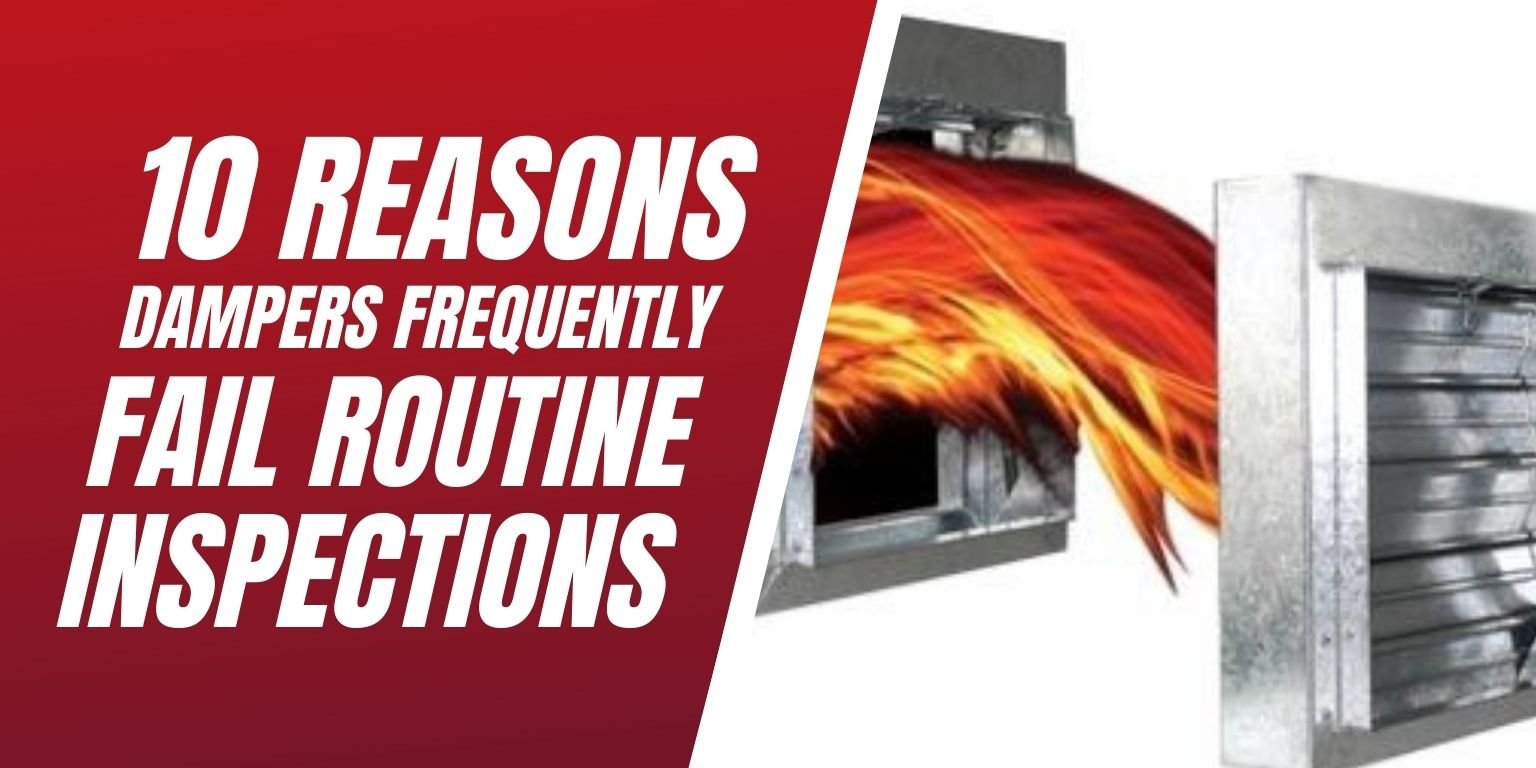
Fire and smoke dampers continue to be an important part of a facility’s over all fire and life safety protection system. Unfortunately, dampers have a tendency to frequently fail during routine inspections. It may not seem like a big deal, especially with other fire protection features (fire doors, firestopping) put in place. But fire and smoke can spread fast, and one of the quickest ways for a fire to travel throughout the entire building is through the ventilation system. Since dampers are typically hidden within the ductwork of a facility, they are often “out of sight, out of mind” and therefore are more likely to be out of compliance. In fact, according to LSS statistics, on average, nearly 22% of dampers fail during a routine fire and smoke damper inspection. So, it is not uncommon to have a list of deficient dampers that are in need of repairs after facility performance testing.
Fire Dampers
Fire dampers prevent the spread of fire within the ductwork through fire-resistance rated walls and floors. They work when the heat from the fire causes the normal temperature of a room to rise to about 165 degrees Fahrenheit. That heat causes the fusible link, which is holding the damper open, to melt and allows the damper to be closed. There are two types of fire dampers, dynamic and static.
Fire Damper Deficiencies
1. Screw in track
2. Linkage out of alignment or broken
3. Bound in tracks (racking)
4. Damper rusted
5. Damper propped open
Smoke Dampers
Smoke dampers resist the passage of air and smoke within the ductwork. They are typically operated by a smoke detector, which would also be located in the duct. Once smoke has been detected, the smoke detector sends a signal to the dampers actuator, which uses the jackshaft and linkage to open and close the blades of the smoke damper. There are two types of actuators used for smoke dampers, pneumatic and electrical.
Smoke Damper Deficiencies
Pneumatic actuators need air to function properly and will fail if there is:
6. No Air to Actuator7. No Airline to Actuator
8. Not Enough Air to Actuator
Electrical actuators need power to function properly and will fail if there is:
9. No Power to Actuator10. No Power Wired to Actuator
To help ensure that dampers are properly working, the National Fire Protection Association (NFPA) require regular maintenance of dampers. As a facility manager or building owner, you understand the importance of maintaining your facilities dampers.
However, no matter what the reason may be, if a damper fails it must be repaired as soon as possible. In order for a damper to do its job it must first be properly working. If the parts of a damper are inoperable, broken, missing or rusted then the damper itself will not function properly. And if a damper doesn’t work properly, then the facility and everyone inside is at risk in the event of a fire.
You're Safe With Us!
LSS Life Safety Services® (LSS) can provide fire and smoke damper inspections per code requirements. Above all, expert LSS technicians will assist you in keeping your facility in compliance with all local and state building codes. The NFPA and the International Building and Fire Codes require regular maintenance of fire and smoke dampers. Authorities Having Jurisdiction (AHJ’s) such as the Joint Commission, fire marshals and insurance risk auditors enforce these requirements.
It is important to stay in compliance with the local and state building codes. Therefore, contract with the company that is an expert in passive fire protection systems. For more information about fire and smoke damper repairs or to learn more about damper inspections, Contact Us Here or call 888-675-4519

